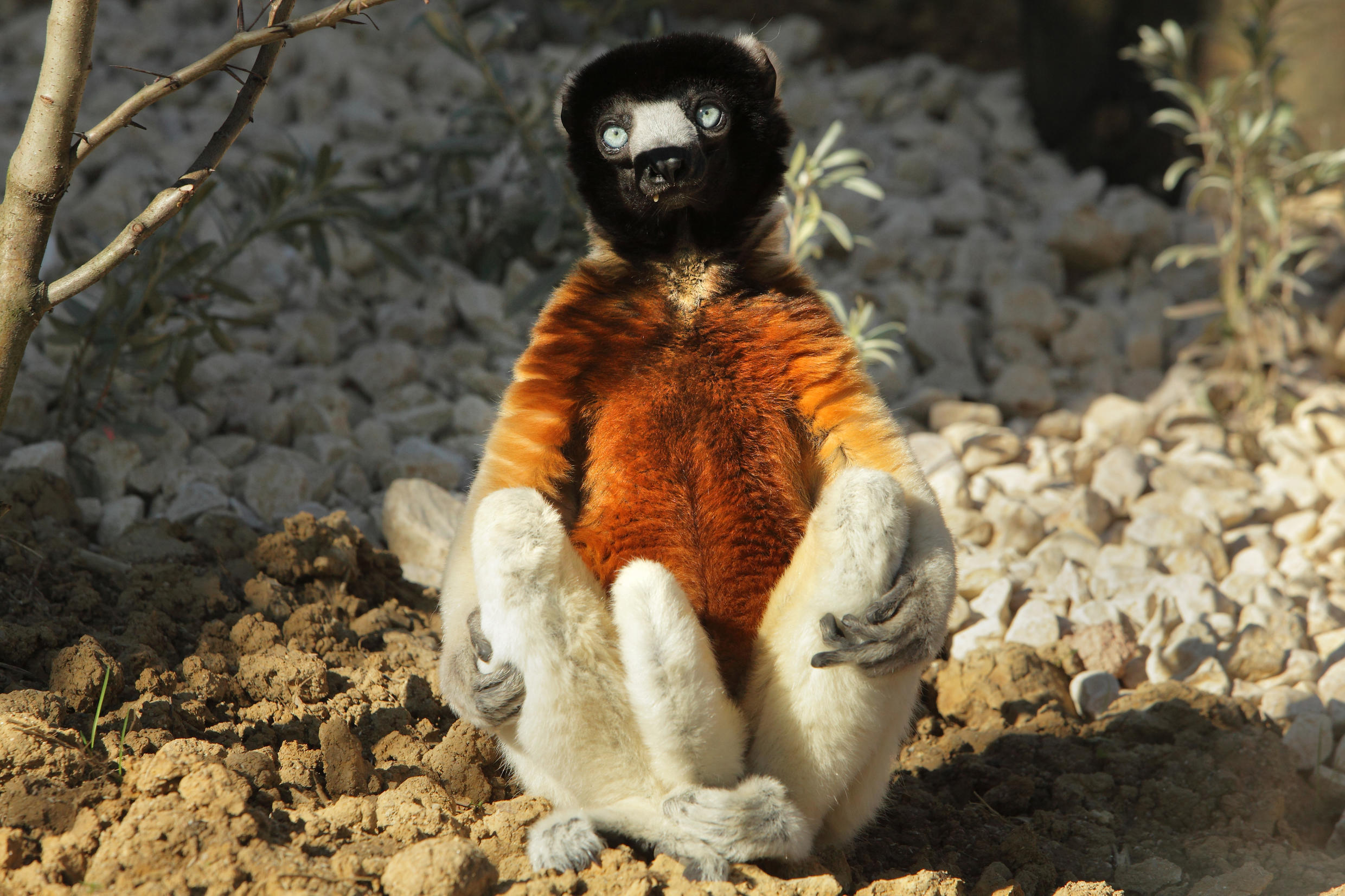Reopened Paris zoo stresses animals' well-being and conservation
Paris now has a "21st-century" zoo. After a six-year makeover, the zoo in the Parc de Vincennes reopens on Saturday 12 April. Its priorities are animal well-being and conservation and the animals' environment is as close to their natural habitat as possible.
Issued on: Modified:

The lemurs are leaping from branch to branch, Nero the lion is having a nap - awaiting his three lioness playmates - and the 16 giraffes - Europe’s largest grouping - are gradually exploring the delights of their enclosure.
“I’m very happy the giraffes have three times the space they had before and that we can have free flying birds in the aviary and in the greenhouse,” says Alexis Lécu, head vet with the Paris Zoo. “This is a real improvement for us.”
Slowly but surely the 80 year-old zoo is returning to life after a full 170-million-euro makeover.
Eighty per cent of the 1,000 animals are now settling in after sometimes long periods of acclimisation elsewhere. There are 170 species in total – 74 species of birds, 42 of mammals, 21 reptiles, 17 amphibians and 15 fish.
All have been bred in captivity. But the experience of coming to see them is radically different from that of a traditional zoo.
“This is a new zoo with a new concept,” says director Sophie Ferreira Le Morvan. “The visitor is immersed in the geographical area of the animals. The stars are the animals and the visitor is invited in the environment of the animals.”
There are limits to what a city zoo can reproduce, so there was no question of doing a full replicate of the savannah for the zebras and antelope or Antarctic conditions for the Humboldt penguins.
Instead the animals have been grouped by region of origin into five biozones: Madagascar, Patagonia, Guyana, Europe and Sahel-Sudan, with replica habitats for tropics, forests and grasslands.

Winding paths take you through what will be lush vegetation; there are few visible fences, wire-netting has replaced iron bars and clever landscaping has been used to separate the wildlife from the watchers and give visitors different points of view from different levels.
The animals are housed in conditions that are as natural and stress-free as possible.
“If we want to show animal species to visitors we have to design a proper environment and to build it so that animal is able to do the whole panel of behaviour that he was supposed to do in nature,” says Lécu.
“So if this animal is able to jump two metres then we have to allow him to jump two metres. If he needs to dig then we should provide him with ground so he can dig. If you can’t be sure that 99 per cent of the behaviour panel of the animal [is] fulfilled … then you don’t take this species in captivity.”
So elephants and bears are no longer part of the line-up; the 14.5-hectare site just couldn’t satisfy their need to roam.
But the eight-metre-high monkey enclosure gives this very sociable species plenty of room to fool around. And the spacious wolf enclosure has secret spaces for food to be hidden, helping to ease the boredom of animals that are born to hunt.

While there are familiar zoo favourites, such as lions, zebras, giraffes, jaguar and rhinos, there are also lesser-known characters like anteaters, tapirs and wolverines. Different species also get to cohabit as they would in the wild – giraffes and ostriches in one area, zebras and rhinos in another.
Some, like the white rhino, lemur, jaguar and a kind of antelope called the oryx gazelle, are endangered species.
But whether visitors get to see any of them is partly up to the animals themselves.
“It’s important that the visitors can see the animals close, it’s fascinating,” says landscape architect Jacquline Osty. “But they don’t always want to come out from behind the hills.”
It was Osty’s job to come up with “artifices” to get the animals to play ball.
“We made these big heated rocks [for the lions] so they come close to the big windows along the [enclosure] and for the jaguar in the Guyana area we have special rocks against the windows so when they throw the fish you can see the animals tryng to catch them.”
Osty says satisfying each animal species needs was like having 170 individual clients.
“A very complicated, made to measure project, but very satisfying.”
Daily newsletterReceive essential international news every morning
Subscribe